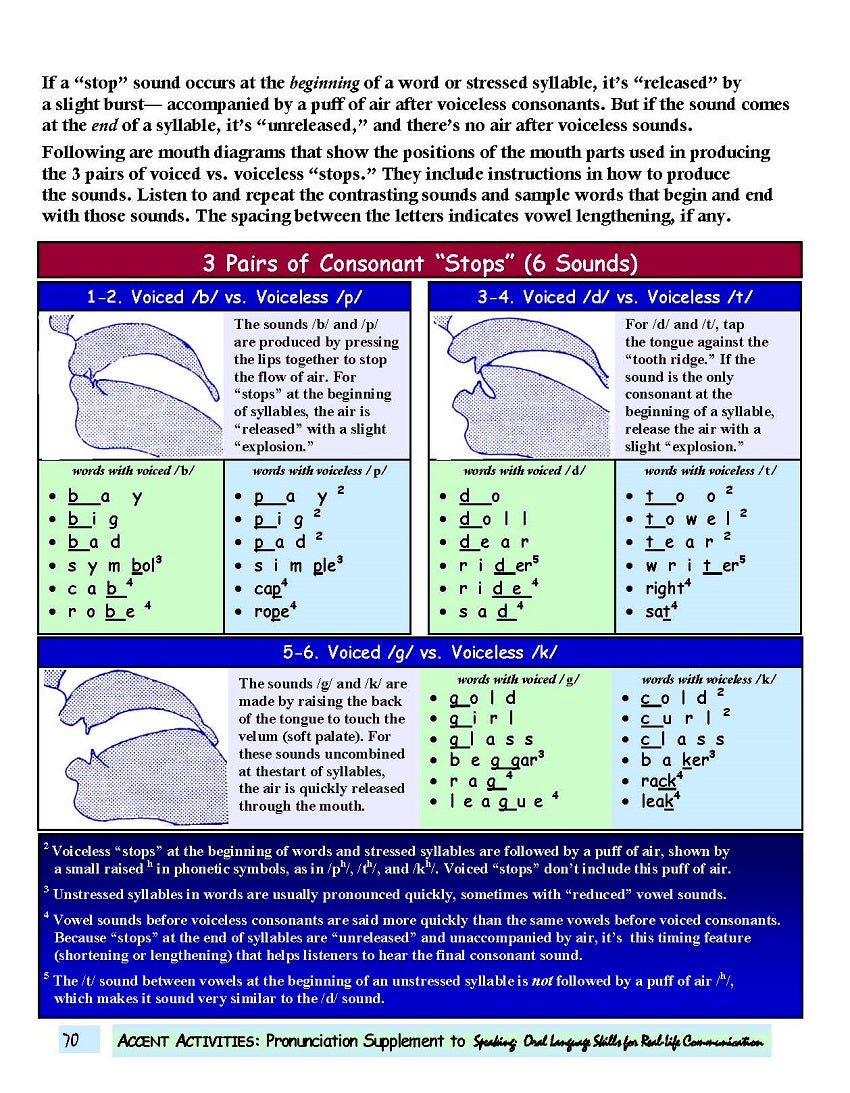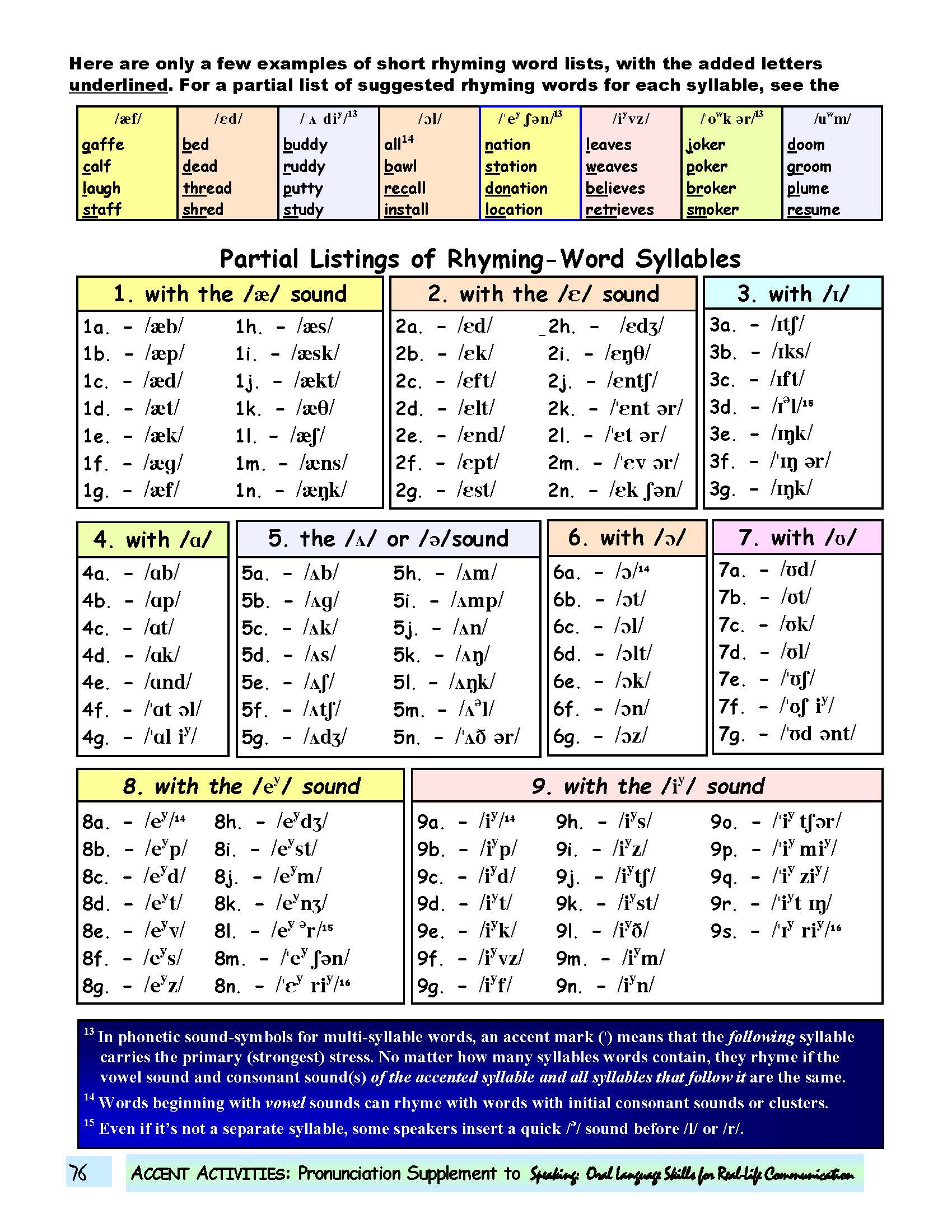Work/Life English
E-03.07 Review How to Distinguish & Produce 24 Voiced/Voiceless Consonants in All Word Positions
E-03.07 Review How to Distinguish & Produce 24 Voiced/Voiceless Consonants in All Word Positions
Accent Activities: Pronunciation Supplement to Speaking. Part Seven: Voiced & Voiceless Consonant Sounds, pages 69-78 (+ pages 89-90 of Answer Key for Text Exercises)
10 + 2 = 12 pages
Who It’s For: Intermediate & Above English (as a Second Language) Teachers, Helpers, & Learners Wanting to Pay Reinforcing Attention to Consonant Sounds & Spellings
Why It’s Useful: Vowels, the core of words, are probably more essential to speech clarity than consonants. Even so, as speakers polish their developing accents, mastering the consonants can contribute to comprehensibility, too. The topics addressed in Part Seven are: where & how 24 consonants are produced in the mouth; 3 pairs (6 sounds) of voiced / voiceless “stops” in all word positions; 5 pairs of “continuants” distinguishable by voicing (or not); 2 “liquids” ( /r l /); 3 “nasals” ( / m n ng / ); 2 “semi-vowels” / w y /; / h /; consonant-sound clusters & combinations. The Download also contains plenty of Charts, Diagrams, Lists, and Vocabulary-Building Activities. Two pages of its Answer Key follow.
What You’ll Do:
[1] Using easily understood language to present, practice, and assess ability to use an American-English accent, teach / learn “the Pronunciation of 8 Voiced Vs. Voiceless Consonant Pairs.” In Exercise 1, contrast Voiced vs. Voiceless Initial & Final Consonants while getting and giving directions on a map with about 35 made-up one-syllable street names.
[2] In Exercise 2, compete in creating CVC words from given Initial Consonant Sounds + Medial Vowels + Final Consonants. In Exercises 3 & 4, come up with as many words as possible for each “Rhyming-Words Syllable” you consider, such as  and hundreds of others. Compare the vocabulary you created with those listed in the Answer Key.
and hundreds of others. Compare the vocabulary you created with those listed in the Answer Key.
[3] And in Exercise 5, try or go back to “Using the Dictionary to Learn or Check Pronunciation.” Continue to be aware of Consonant Sounds & Spellings in everyday language.
Couldn't load pickup availability










